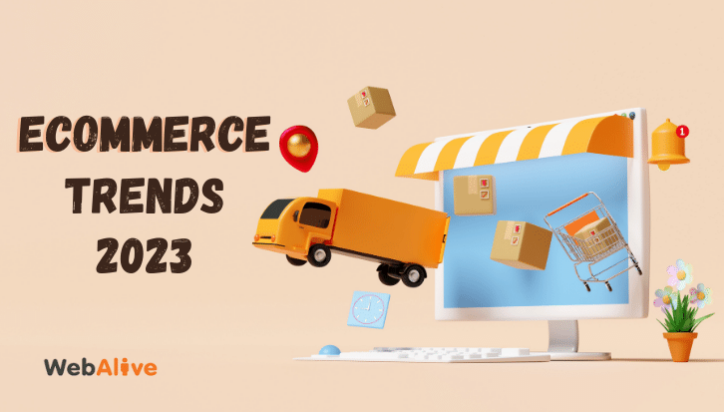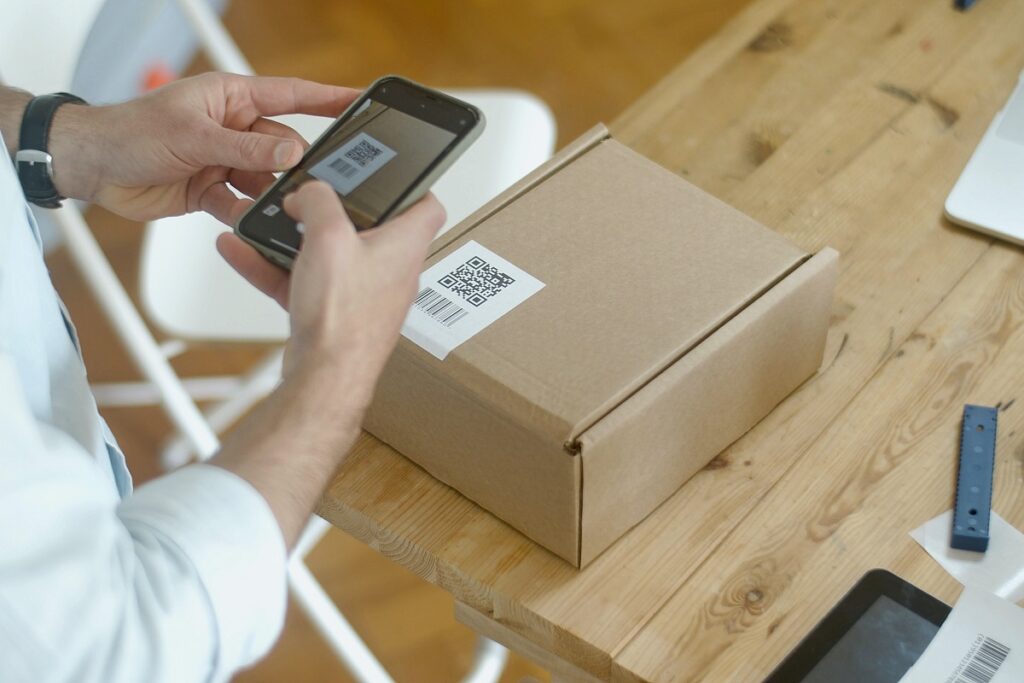
Ecommerce Trends to Watch Out for This Coming 2023
Since the start of the pandemic, eCommerce sales have skyrocketed, having most people quarantined and doing their transactions online. According to Statista, in 2021, retail e-commerce sales amounted to roughly 5.2 trillion US dollars worldwide. It is also expected to grow by 56% over the next few years.
However, together with the increase comes the competition, and so as the necessity of working toward a successful eCommerce website development. Because as a business, you need to be uniquely different from your competitors so more customers will flock to your company. And one way to do this is by keeping up with eCommerce trends and technology.
Likewise, this article will discuss some of the latest trends in the eCommerce industry.
Why is keeping up with ecommerce trends vital?
Like any other market, eCommerce trends pop out left and right. New tools, strategies, and platforms are being invented. And as a business owner, it’s crucial to stay ahead of the competition and keep track of these trends.
Moreover, consumers’ expectation is evolving. As a brand, you need to innovate and cater to their expectations to build their trust and loyalty. Likewise, keeping up with eCommerce trends can help you improve your service. It can also provide opportunities to make sales or cut down operation costs.
10 Ecommerce Trends to Watch Out
1. Omnichannel shopping
Omnichannel shopping is a retail strategy combining multiple channels to sell and promote products. It is considered one of the best eCommerce trends as it combines all the best features from different media to create a more personalised customer experience.
Omnichannel shopping is quickly becoming a norm in eCommerce trends. According to OmniSend, marketers with at least three channels in their business experienced a 287% purchase rate compared to single-channel companies.
2. QR Codes

QR Code has been around for years. It was first introduced in 1994 by Denso Wave to track vehicles and parts during manufacturing accurately. But as time went by, other companies quickly adopted QR codes to provide information to their customers. Businesses use QR Codes to share contact information, share webpages, save a blog post for later, or even an entire 3-page essay.
Likewise, it was also quickly adapted in retail or eCommerce businesses to provide an interactive shopping experience. As shared by UPrinting, QR Codes were used in marketing campaigns by big corporations such as L’Oréal Paris, Cygames, and IBM during the pandemic.
QR codes have made it easier for these companies to promote their products and services to shoppers. These giant companies also used QR codes to capture data about their customers, such as where they came from and what they looked at when they scanned the code. This data was then later used to improve their customer campaign.
3. Buy now, pay later
Buy now, pay later, or deferred payment shopping is one of the utmost standard payment options available to stores or shopping malls worldwide. In the past, if you wanted to buy a product, you had to pay for it immediately.
But nowadays, many online stores offer to buy now and pay later. This is a great way to safeguard you, don’t overspend on your credit card and always have money for emergencies.
This type of payment option has recently been widely available to Ecommerce trends. According to C + R Research study, about 60% of their respondents have used Buy Now, Pay Later in their online shopping. Also, Buy Now Pay Later is convenient for customers because they don’t have to pay for the item immediately.
4. Live selling / Shopping
Live selling is a new form of selling that has emerged in the digital age. According to Fit Small Business, the live-streaming market has reached USD 11 Billion worldwide. This number has doubled since 2020 when this method was first popularized due to the pandemic.
Why is this the case? This is mainly due to the portability and flexibility of live selling. Live selling can cater to any market, including home décor, furnishing, beauty and makeup, clothing, and even fresh food. You can also conduct live selling on any eCommerce platform, including your own websites, live streaming platforms, and even social media.
Likewise, this type of trend provides various benefits to a company. It is an excellent way for retailers to connect with their customers, feature their products, and sell them. Moreover, it is an interactive and visual experience that allows customers to explore products and ask questions about them in real time.
5. Voice-enabled shopping experiences
Voice search is becoming more popular in the online world. Since its development, many users have been using voice search, which is faster and easier than typing and very convenient in everyday life. And this technology has now penetrated online shopping. According to Oberlo, about 51% of US online shoppers use voice assistants to find a product or service.
The benefits of voice search are endless. It is faster and easier than typing. Likewise, it provides convenience for shoppers who do not have time to type in their query or those with a disability that prevents them from typing.
6. Brand marketing on TikTok

TikTok is probably one of the most used social media platforms today. It was launched in China in September 2016 and gained traction worldwide, with more than 740 million monthly active users in 2021.
With its popularity, TikTok has also become an avenue for businesses to promote, sell, and advertise their company and products. The app and its mother company have made this possible by launching advertising on TikTok, followed by its first in-app shops in the US.
7. Artificial intelligence in online shopping
Online shopping has been around for a while now. It has become integrated into everyone’s life and has made life easier regarding errands, shopping, and more. They do not have to go through the hassle of going to the store and looking for what they need. All they have to do is go online, find what they need, and buy it.
And with the advancement of artificial intelligence, online shopping has changed. Artificial intelligence is altering the means of how we shop online. It can predict our needs and make recommendations based on past purchases. Likewise, AI can also suggest what products might be good for the customer based on his or her needs.
As a result, AI in online shopping has made it easier for patrons to make shopping more personalised.
8. Environmental sustainability
Online shopping is a convenient and time-saving way to buy everything from groceries to clothes. However, the environmental impact of online shopping is as grave as it seems. With the rise in demand for online shopping comes the increase in waste produced by the industry. And thus, there is a need to adopt sustainability.
The concept of environmental sustainability has been around for decades. The initial idea was introduced in 1972 and was well-embraced by many organisations. If you want to integrate this concept into your company, the first step towards sustainability would be to ensure that the products are shipped minimally. Try to skip using plastic or use containers that can be recycled easily.
The next step would be to use renewable energy sources to power the servers and data centres that host these transactions. Finally, the last step would be to encourage consumers to use eco-friendly modes of transportation like public transport or bicycles for delivery purposes.
9. Customised packaging

Customised packaging is an eCommerce trend that is becoming increasingly popular. Gone were the days when companies used a generic plain cardboard boxes for their shipments. But is custom packaging really worth it?
Today, more customers are looking for companies who understand them and provide personalised experiences. According to Packlane, custom packaging can make a company stand out from its competitors. Customers will be more likely to buy the product because they feel like they are getting something special.
And while you think custom packaging is expensive, having custom packaging will ensure that your products arrive to your customers damage-free and protected. In addition, most customised packaging is environmentally friendly and is made with biodegradable material compared to generic ones.
10. Data protection
Lastly, data protection is a hot topic in the eCommerce trends. Data privacy, security, and protection are all critical for any business that handles customer data.
Companies collect much information about their customers, such as their names, addresses, contact details, and credit card numbers. This information is used to provide them with personalised offers and services.
But the problem is that these companies need to have suitable security measures to protect this sensitive information from hackers or other cybercriminals who might steal it. That’s why it’s important to ensure that your company has a sound system for data protection before you start collecting personal information from your customers.
Wrapping things up
The future of eCommerce is interchangeable. These concepts might work on your business this year, but it does not guarantee the same result for next year. And with the advancement of technology, these trends constantly change.
As business owners, we must keep up with these eCommerce trends. And in no time, we will get the results that we are expecting.
You read a lot. We like that
Want to take your online business to the next level? Get the tips and insights that matter.


